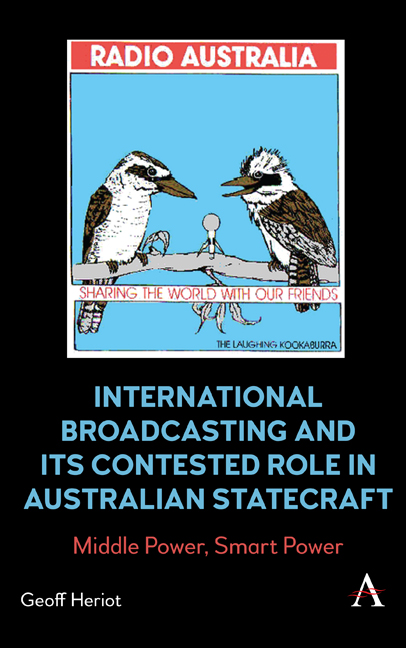 International Broadcasting and Its Contested Role in Australian Statecraft
International Broadcasting and Its Contested Role in Australian Statecraft Book contents
- Frontmatter
- Dedication
- Contents
- List of Figures
- Foreword
- Acknowledgements
- Chapter One Introduction
- Chapter Two Media and the Contest of Ideas
- Chapter Three International Broadcasting and Its Discursive Properties
- Chapter Four Mobilising ‘Softer’ Power in a Hard World
- Chapter Five Australia’s ABC: State Interests, National Evolution
- Chapter Six Purpose, Performance and Evaluation
- Chapter Seven Modernising the ABC
- Chapter Eight Policy, Priorities and Qualified Independence
- Chapter Nine Engaging with Intercultural Audiences
- Chapter Ten Indonesia, the Crucible
- Chapter Eleven Strategic Contingency and War
- Chapter Twelve Looking to the New Disorder
- Index
Chapter Eight - Policy, Priorities and Qualified Independence
Published online by Cambridge University Press: 15 November 2023
- Frontmatter
- Dedication
- Contents
- List of Figures
- Foreword
- Acknowledgements
- Chapter One Introduction
- Chapter Two Media and the Contest of Ideas
- Chapter Three International Broadcasting and Its Discursive Properties
- Chapter Four Mobilising ‘Softer’ Power in a Hard World
- Chapter Five Australia’s ABC: State Interests, National Evolution
- Chapter Six Purpose, Performance and Evaluation
- Chapter Seven Modernising the ABC
- Chapter Eight Policy, Priorities and Qualified Independence
- Chapter Nine Engaging with Intercultural Audiences
- Chapter Ten Indonesia, the Crucible
- Chapter Eleven Strategic Contingency and War
- Chapter Twelve Looking to the New Disorder
- Index
Summary
Under the ABC Act (1983), which stipulated the corporation’s editorial and administrative independence from government, the state exercised its interests through budgetary interventions and allocative priorities. In this way, the state and its agent (the charter-enabled ABC) differentiated the sometimes-clashing requirements of international broadcasting operating in the liberal tradition: political purpose and performance. Purpose embodied the material interests of the state, given expression at the level of high strategy, public asset investment priorities and their intended deployment. The broadcaster’s performance in serving the national interest took form through its capacity to reach designated audiences, its editorial and programme decisions, and its production norms and style.
Government ministers and their departments, especially Foreign Affairs, advised the ABC as to which foreign publics should be targeted, in what languages and over which defined geographical zones. Government decisions on capital investment, especially those related to transmission capacity, substantially determined the sphere of effective audience reach that Radio Australia could achieve. This chapter examines the relationship between the ABC and government when setting international broadcasting targets and priorities, a relationship in which the broadcaster sought to reconcile state interests with the values of a liberal media model.
Prior to the re-constitution of the national public broadcaster in 1983, its then-chief executive, Keith Jennings, said Radio Australia serviced ‘primary’ targets comprising 13 Asian nations as well as Papua New Guinea and Pacific Island countries (Jennings 1983). Its ‘secondary’ targets were listed as the Middle East, Africa, Europe, North America and South America. At the time, Radio Australia broadcast in six Asian languages (including both Standard Chinese/Mandarin and Cantonese) as well as French and Tok Pisin, which meant it relied largely on English to reach most countries designated as primary or secondary targets. In the 1980s, the international service recalibrated its strategic focus as an Asia Pacific regional broadcaster, partly in acknowledgement of the ‘parlous state’ of its transmission capability (ABC 1989, p. 1). This recalibration also reflected a shift in the Australian government’s outlook in a changing geostrategic environment. It demonstrated the interplay of circumstance, political purpose and performance.
- Type
- Chapter
- Information
- International Broadcasting and Its Contested Role in Australian StatecraftMiddle Power, Smart Power, pp. 137 - 164Publisher: Anthem PressPrint publication year: 2023


